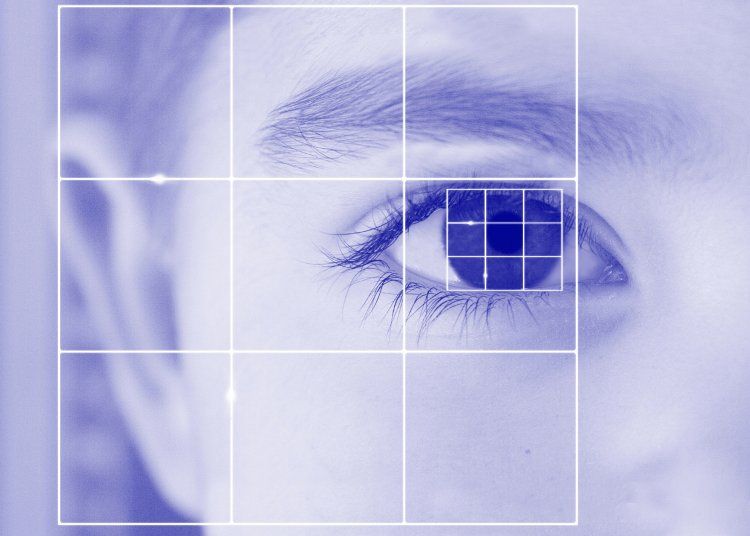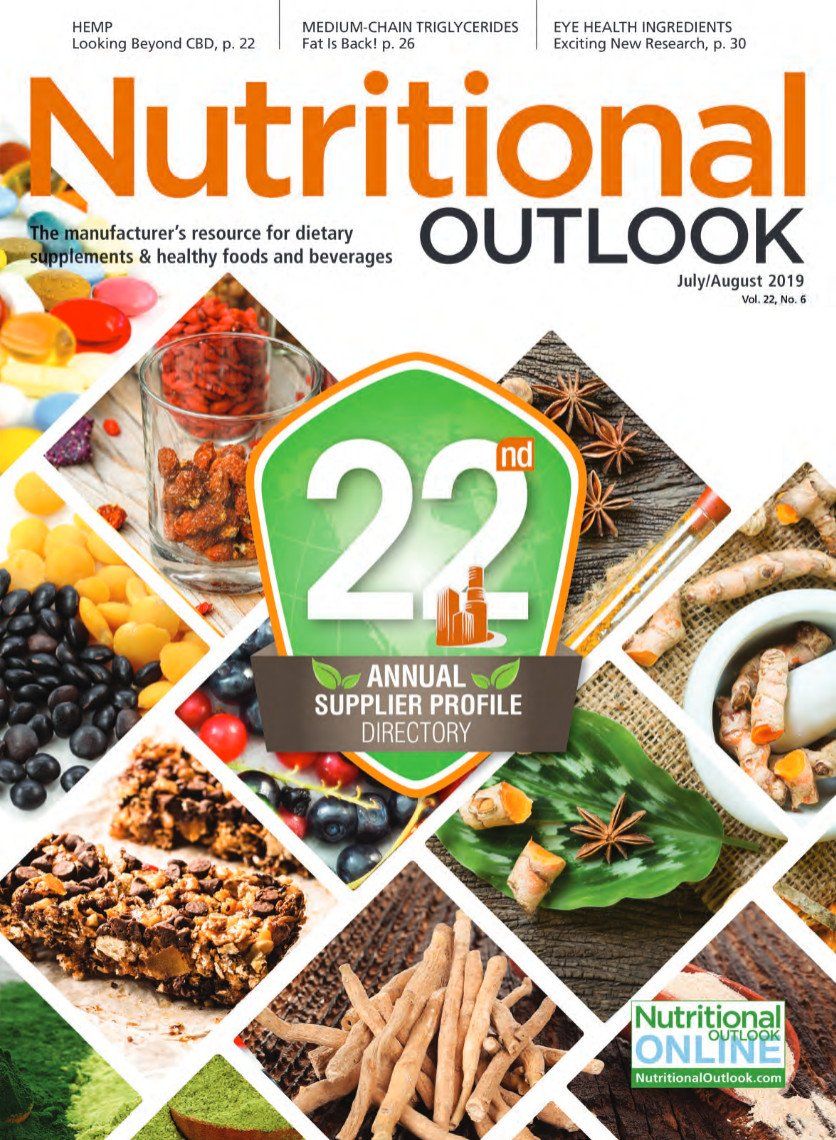Eye health science and supplements: The long view
Researchers are finding that dietary supplementation can go a long way toward shoring up ocular health and protecting eyes against the battery of threats they face.

“Of all five senses,” observes Karen Hecht, PhD, scientific affairs manager, AstaReal USA Inc. (Burlington, NJ), “vision is the prime one most of us rely on for information.” A Research!America poll even found that 88% of respondents consider vision to be vital, with 47% agreeing that losing sight would have the most impact on their lives, precipitating lost independence and a dramatic disruption of daily activities.1
So it’s surprising-and a little ironic-that vision is also the sense that’s easiest to take for granted, until it starts to wane. And with screen time, blue light, environmental assaults, and the process of aging all exacting a toll on our eyesight, that time of waning is arriving sooner than before.
But it doesn’t have to, for researchers are finding that dietary supplementation can go a long way toward shoring up ocular health and protecting eyes against the battery of threats they face. The science-and the possibilities for nutritional interventions it suggests-are worth looking at.
Eyes in Danger
Given vision’s primacy in our lives, it’s remarkable how sensitive and vulnerable the organs responsible for it are. But they’re hardly defenseless.
As Brian Appell, marketing manager, OmniActive Health Technologies (Morristown, NJ), explains, “We’re constantly bombarded by different wavelengths of light, including UV and high-energy blue light. The good news is that eyes are incredibly effective at blocking UV radiation from the sun, only allowing about 1% to reach the retina, which is at the very front of the eye.”
The bad news is that eyes are less adept at filtering the high-energy blue light emitted not only by the sun, but from digital device screens and even energy-efficient lighting. “In fact,” Appell says, “almost all blue light reaches the retina and travels all the way to the macula, which is located at the very back of the eye.”
Modern Problems
High-energy blue light is a concern on a number of counts. For one, it generates considerable oxidative stress within the eye. It also reduces contrast, which keeps eyes in a continual state of having to re-accommodate focus. This overworks the ciliary muscles that help our eyes adjust to viewing at different distances, and it produces the eye strain and fatigue that go by the very 21st-century name of computer vision syndrome, or CVS.
While this news won’t likely convince us to abandon our digital devices, it may further complicate our love/hate relationship with them. For Hecht notes that the average American spends 7.5 hours daily focusing on screens at an average distance of 14 inches away, bathing their eyes in the blue light and ciliary stress that cause 65% of American computer users and approximately 60 million people worldwide to suffer from eye strain.
Even kids get hit. While 66% of U.S. adults cop to spending too much time on digital devices, research by Kemin (Des Moines) reveals that fully 69%of parents of 6- to 12-year-olds report not only that their child uses digital devices, but that their use won’t likely diminish, as it’s part of both leisure and school routines.2
Macula Matters
That means exposure to blue light starts early and worsens with time. But the eye’s macula-a pigmented region specialized for high-acuity vision and a victim of blue light-may contain the secret to countering the high-energy wavelength’s menace.
That’s because it’s where the three main macular carotenoids congregate: lutein in the peripheral macula, RR-zeaxanthin in the mid-peripheral macula, and RS-zeaxanthin in the center. “The macular carotenoids are imperative to healthy vision for a lifetime,” Appell explains, “and as more science comes out, it seems their ‘magic’ comes from the combination of all three.”
However, the body doesn’t produce lutein and the zeaxanthin isomers de novo, and we know dietary intake to be low.3 As a result, “The average individual isn’t getting enough from dietary sources to increase their macular pigment optical density-or MPOD-to a level that provides significant protection from blue light,” says Ceci Snyder, MS, RD, global vision product manager, human nutrition and health, Kemin (Des Moines).
The Case for Supplementation
That’s where supplementation comes in. “Solid scientific evidence supports the benefits of supplementation with lutein and zeaxanthin for eye health,” Snyder continues, pointing to the largest study to examine its effects on age-related macular degeneration (AMD) thus far: the Age-Related Eye Disease Study 2 (AREDS2), conducted by the U.S. National Eye Institute.
Appell agrees, adding that while no defined requirement for the major dietary carotenoids yet exists, the data suffices to consider lutein and zeaxanthin’s isomers “conditionally essential,” he says. “Their importance to eye health should not be understated, especially considering the growing prevalence of AMD, one of the leading causes of vision impairment globally.”
Beyond Baseline
The evidence supporting macular carotenoids’ protective effects is undeniable, and imperative, given the threats to basic ocular health we face. But, Appell notes, emerging research is affirming how these nutrients not only help us see, period, but help us see better.
Endpoints like contrast sensitivity, photo-stress recovery, and glare performance are all quantifiable measures of how well we see under different circumstances, Appell says, and as such, they offer “a huge opportunity in the eye-health market.”
Consider that “how we react within our environments starts with how rapidly visual information travels from our eyes to our brain-visual processing speed,” Appell says. “Improving visual processing speed through supplementation provides new opportunities in categories like sports nutrition, where reaction time is key.”
So a time will come when the eye-health category will be about more than just prevention; it’ll offer optimization, “providing ‘immediate’ benefits that are important and relevant to consumers,” Appell says. “That, in turn, requires new science to elucidate and support these benefits.”
Check out the following pages to see what some of that science is revealing.
References
1. Research!America press release. “New Public Opinion Poll Reveals a Significant Number of Americans Rate Losing Eyesight as Having Greatest Impact on Their Lives Compared to Other Conditions.” September 18, 2014. Accessed at: http://eyeresearch.org/pdf/Poll_press_release.pdf
2. Kemin/DSM Consumer Research, 2018.
3. Johnson et al. Journal of the American Dietetic Association, vol. 110, no. 9 (2010):1357-62
Photo © AdobeStock.com/dimasobko

ER Duty
As potent antioxidants and filters of blue light, lutein and the zeaxanthin isomers are gaining greater recognition for protecting against digital-device dangers. And while “the protective qualities of the macular carotenoids are well established,” Appell says, “the mechanisms by which they protect haven’t been well-explored.”
An animal study4 published last year showed for the first time that blue light damages retinal tissue not only by promoting oxidative stress, but by increasing stress in the endoplasmic reticulum (ER), a cellular organelle that participates in protein synthesis.
The study also found that lutein and zeaxanthin-in the form of OmniActive’s Lutemax 2020 ingredient-downregulated genes involved in ER stress and thus protected the macula’s sensitive photoreceptors against blue-light exposure.
The study, Appell says, “further demonstrates the importance of consistent and adequate intake of these important nutrients for healthy vision.”
Reference
4. Minzhong Y et al. “Lutein and zeaxanthin isomers protect against light-induced retinopathy via decreasing oxidative and endoplasmic reticulum stress in BALB/cJ mice.” Nutrients. Published online June 28, 2018.
Photo © iStockphoto.com

Good Sports
As Appell notes, “Improving visual processing speed and other key performance markers like disability glare and photo-stress recovery through supplementation provides new opportunities in different categories-like sports nutrition-where reaction time is key.”
A recent paper5 drew upon the LAMA II study-a year-long double-blind, placebo-controlled trial involving 59 healthy young subjects randomly assigned to 1) a placebo, 2) 10 mg of lutein plus 2 mg of zeaxanthin, or 3) 20 mg lutein plus 4 mg zeaxanthin (both as Lutemax 2020)-to demonstrate that MPOD, visual performance in glare, and photo-stress recovery improved significantly in both supplement groups relative to the placebo after six months, with further improvement emerging at 12 months.
The results of LAMA II also showed that supplementation with all three macular carotenoids improved processing and reaction speed. “The study suggests that the positive findings may be, in part, due to the unique composition of Lutemax 2020, which contains all three macular carotenoids-lutein, RR-zeaxanthin, and RS (meso)-zeaxanthin.”
Reference
5. Stringham JM et al. “Macular carotenoid supplementation improves disability glare performance and dynamics of photostress recovery.” Eye and Vision. Published online November 11, 2016.
Photo © Shutterstock.com/Jacob Lund

Looking Smart
“An exciting new area of research is the connection between eye and brain health,” says Snyder. A study6 published in 2017 was the first randomized, double-blind, placebo-controlled trial to test the combination of 10 mg lutein (as Kemin’s FloraGLO brand) and 2 mg zeaxanthin in healthy, well-nourished young adults, and it revealed increased visual memory and MPOD, and improved complex attention and reasoning ability.
Earlier this year, another study7 showed lutein’s benefits in enhancing connectivity between brain networks. The findings make sense, Snyder says, as lutein is the brain’s predominant carotenoid, and the mechanism behind its benefits may involve how the pigment “integrates into cellular membranes in specific directions, likely influencing the functional properties of synaptic membranes and the speed at which messages are transmitted across neurons.
The upshot: “For supplement brands, the opportunity to connect eye and brain health is an opportunity readily supported by science,” Snyder says.
References
6. Renzi-Hammond et al. “Effects of a lutein and zeaxanthin intervention on cognitive function: a randomized, double-masked, placebo-controlled trial of younger healthy adults.” Nutrients. Published online November 14, 2017.
7. Lindbergh et al. “The effects of lutein and zeaxanthin on resting state functional connectivity in older Caucasian adults: a randomized controlled trial.” Brain Imaging and Behavior. Published online ahead of print January 24, 2019.
Photo © AdobeStock.com/monsitj

The Other Ocular Carotenoid
Astaxanthin belongs to the same xanthophyll carotenoid family as lutein and zeaxanthin, but boasts two to three times the antioxidant capacity. Even better, Hecht says. “Astaxanthin works in the muscles at the front of the eye that help support dynamic focus.”
Hecht points to earlier clinical work showing that astaxanthin supplementation improves eye fatigue by quenching free radicals that trigger the inflammation associated with persistent visual stress and tension of the ciliary muscle. A preclinical study showed that as much as half of all astaxanthin in cellular membranes localizes in mitochondrial membranes, too. “This is important because mitochondria form free radicals as a byproduct of their metabolism,” Hecht says. “With astaxanthin positioned at their source, it can protect mitochondria and energy production in the eye.”
In a 2010 double-blind, randomized placebo-controlled study8, computer workers supplemented with 9 mg of her AstaReal’s astaxanthin or a placebo for four weeks. At treatment’s end, 62% of those in the astaxanthin group who reported moderate to severe eye strain before the study experienced improvement, while only 15% of those taking a placebo did. “Increased accommodation amplitude in all treated subjects, for example, indicated improved reaction on near and far objects,” Hecht says.
Reference
8. Nagaki Y et al. “Effect of astaxanthin on accommodation and asthenopia.” Folia Ophthalomogica Japonica, vol. 3, no. 5 (2010): 461-468
Photo © AdobeStock.com/ExQuisine

K2 Connection
We usually think of vitamin K2-particularly the menaquinone 7 (MK-7) form-as a nutrient for heart and bone health. But “new research has come to light identifying vitamin K2’s mechanism as benefiting vision health,” says Kate Quackenbush, director of communications, NattoPharma (Oslo, Norway).
A 2018 study9 examined calcification-induced aortic stiffness as a factor in retinal arteriolar health, finding that circulating inactive matrix Gla protein (MGP) is a long-term predictor of smaller retinal arteriolar diameter in the general population.
Active MGP is a well-known inhibitor of vascular calcification, Quackenbush notes, and “vitamin K2 as MK-7 is the only compound to date shown to impact arterial calcification through its activation of MGP.” Because obtaining an adequate vitamin K2 intake from diet alone is a tall order, the researchers note that their “observations highlight the possibility that vitamin K supplementation might promote retinal health.”
“This new study is an exciting development for vitamin K2’s potential,” Quackenbush says. “We already know that K2 supplementation can help the population support bone and cardiovascular health simultaneously; just imagine if one nutrient could support vision health at the same time.”
Reference
9. Wei FF et al. “Inactive matrix Gla protein is a novel circulating biomarker predicting retinal arteriolar narrowing in humans.” Scientific Reports, vol. 8, no. 1 (Oct 10, 2018): 15088
Photo © Shutterstock.com/photographyfirm















